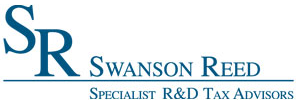Nevada Patent of the Year – 2024/2025
LedgerDomain LLC has been awarded the 2024/2025 Patent of the Year for their innovative approach to integrating machine learning with blockchain technology. Their invention, detailed in U.S. Patent No. 12028452, titled ‘Establishing a trained machine learning classifier in a blockchain network’, introduces a novel method for enhancing compliance and anomaly detection in regulated industries.
This patented system utilizes a neural network-enabled interface server within a blockchain network to detect and manage exception events in real-time. By applying multilayer convolution and pooling processors to training datasets, the system generates reduced-dimensionality images of drugs and exception events. These images are then used to train classifiers that can identify discrepancies and trigger appropriate remedial actions, all while maintaining the integrity and transparency inherent in blockchain technology.
LedgerDomain’s innovation addresses a critical need in sectors such as pharmaceuticals, where regulatory compliance and timely response to anomalies are paramount. By combining the secure, immutable nature of blockchain with the predictive capabilities of machine learning, this system offers a robust solution for monitoring and managing complex compliance requirements.
This advancement represents a significant step forward in the application of AI and blockchain technologies, providing industries with a powerful tool to enhance operational efficiency and regulatory adherence.
Study Case
IVO Tech (IVO) is a leading software company specializing in employment screening software. The company was founded to provide new and innovative technologies to employment screening firms to help them improve productivity, reduce overhead, and have technological competitive advantages over otherwise similar firms.
IVO incurred qualified research expenses relating to the development of numerous innovative features in 2011-2013. IVO had never claimed the R&D tax credit before and was unaware it was performing qualified activities. After meeting with a specialist and learning more about R&D, IVO realized it was eligible for the credit.
The R&D tax credit specialist helped IVO determine its qualifying R&D activities, many of which were part of the company’s daily operations. IVO’s qualified research expenses (QRE) included:
- Development of new or improved software features to meet changing consumer preferences;
- Improvement to processing speeds
- Improvements for storage
- Testing across all supported releases to determine exposure
- Experimentation with possible fixes until an adequate solution was determined
- Creating and executing test cases to eliminate uncertainty prior to releasing software to customers
After adding up labor and supplies costs from 2011-2013, IVO spent $1.95 million on R&D for those three years. IVO claimed the Federal R&D Tax Credit and received a $45,000 tax credit.
After realizing the benefits, a sustainable methodology was also established to help IVO identify, document and substantiate eligible R&D projects and costs on an ongoing basis.
Qualified research consists of research for the intent of developing new or improved business components. A business component is defined as any product, process, technique, invention, formula, or computer software that the taxpayer intends to hold for sale, lease, license, or actual use in the taxpayer’s trade or business.
The Four-Part Test
Activities that are eligible for the R&D Credit are described in the “Four-Part Test” which must be met for the activity to qualify as R&D.
- Permitted Purpose: The purpose of the activity or project must be to create new (or improve existing) functionality, performance, reliability, or quality of a business component.
- Elimination of Uncertainty: The taxpayer must intend to discover information that would eliminate uncertainty concerning the development or improvement of the business component. Uncertainty exists if the information available to the taxpayer does not establish the capability of development or improvement, method of development or improvement, or the appropriateness of the business component’s design.
- Process of Experimentation: The taxpayer must undergo a systematic process designed to evaluate one or more alternatives to achieve a result where the capability or the method of achieving that result, or the appropriate design of that result, is uncertain at the beginning of the taxpayer’s research activities.
- Technological in Nature: The process of experimentation used to discover information must fundamentally rely on principles of hard science such as physical or biological sciences, chemistry, engineering or computer science.
What records and specific documentation did IVO Tech keep?
Similar to any tax credit or deduction, IVO had to save business records that outlined what it did in its R&D activities, including experimental activities and documents to prove that the work took place in a systematic manner. IVO saved the following documentation as evidence:
- Innovation Log
- Records of changes and bug fixes
- Photographs/ videos of testing
- Testing protocols
- Results or records of analysis from testing/ trial runs
- Tax invoices
- Receipts
- Labor time sheets
By having these records on file, IVO confirmed that it was ‘compliance ready’ — meaning if it was audited by the IRS, it could present documentation that illustrated the progression of its R&D activity, therefore proving its R&D eligibility.
Click here to view the PDF version of this case study.
Choose your state


















 […]
[…] […]
[…]
